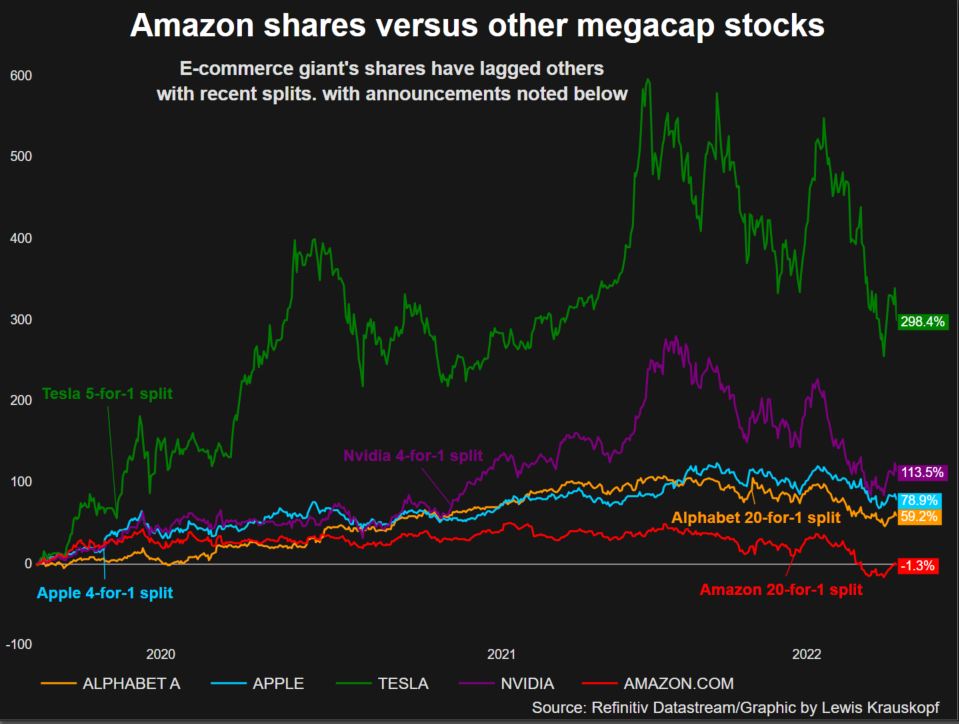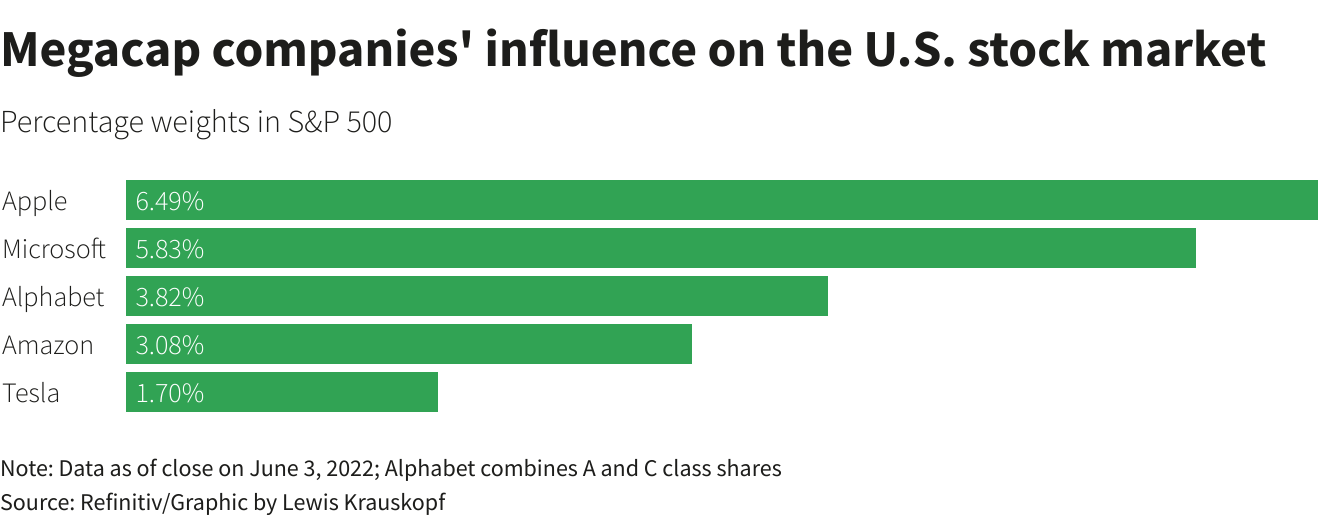While a split won’t affect a company’s fundamentals, it could help support its stock price by allowing more investors to own it, market participants say.
“Stock splits are definitely associated with successful stocks,” said Steve Sosnick, chief strategist at Interactive Brokers. “The psychology remains that stock splits are good. We can debate whether or not they are good, but if the market sees them as a positive, then they act like one.”
Analysts at MKM Partners believe the rally in Amazon shares since May, in which they have cut their year-to-date loss by a third, has been helped by anticipation of the split. “While we view this event as largely non-fundamental, we believe a stock split and potential retail activity could be an additional catalyst for shifting sentiment in AMZN stocks,” said MKM’s Rohit Kulkarni. in an obligation on Monday.
Stock splits can drive additional participation from retail investors, who, on average, tend to trade in smaller sizes due to their limited capital, compared to institutional investors, according to a Cboe report released in May. .
The effect was most pronounced for stocks with larger market caps, according to the report, which analyzed 61 stocks from all market cap categories that have split since 2020.
Peng Cheng, head of big data and AI strategies at JPMorgan, said retail investor ownership in Amazon shares has been comparatively weak, compared to robust retail activity in the firm’s options – a sign that a four-digit stock price may have put off individual traders. “Psychologically, it doesn’t feel good to spend $1,000 and own a third of a stock,” he said.
BofA Global Research found that stock splits are “historically bullish” for the companies doing them, with their stocks posting an average return of 25% a year later, compared to 9% for the broader market.
Stock Splits are Historically Bullish – S&P 500 Average Performance vs. companies having announced a split over 3/6/12 months
Stock splits may increase the number of investors able to indulge in options, especially for high-dollar stocks, analysts say.
For example, on Friday, a trader wishing to bet on a 12% rise in Amazon shares by July 1 would have had to shell out around $2,900. On Monday, a bet on the same percentage gain in stocks by July 1 cost around $135, according to Reuters calculations.
Still, options aren’t as big of a force in the market as they were last year, at the height of the so-called “meme-stock mania.” “If this had happened a year ago, when individual traders became infatuated with call option speculation in a way none of us had seen before, it would have been much more explosive,” Mr. Sosnick said.

Amazon stock versus other megacaps that have split in recent years
Of course, a stock split alone isn’t likely to overcome the myriad of other factors that have dragged stocks down this year, including concerns over tight monetary policy and high inflation for decades. decades.
At the same time, the rise of commission-free trading and the advent of stock splits have removed some of the immediate appeal of stock splits from investors, said Randy Frederick, vice president of trading and derivatives for the Schwab Center for Financial Research. “It’s nowhere near as big a deal as it once was,” Frederick said.
Amazon is the latest megacap to split its shares. Other companies that have split their shares since 2020 include Apple, Tesla and Nvidia. Alphabet also announced a 20-to-1 stock split in February, with its split expected to take effect next month.

Weight of megacaps on the S&P 500, in %
